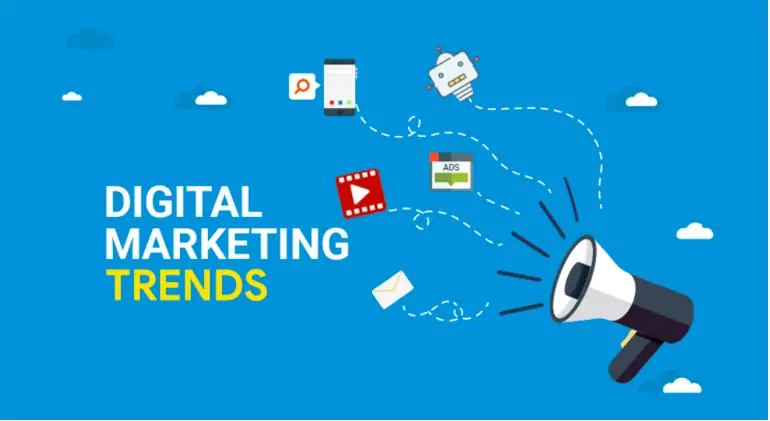The Art and Science of Website Development
In the digital age, your website is often the first interaction potential customers have with your business. Website development is both an art and a science, where creativity meets technical prowess to create a digital masterpiece. This article explores the intricate world of website development, from its importance and key stages to emerging trends in the field.
1. The Digital Face of Your Business
Your website is a digital storefront, the face of your business in the online world. It’s the place where customers land, explore, and make decisions. Hence, site development plays a pivotal role in shaping how your audience perceives your brand and interacts with your products or services.
2. The Essence of Site Development
Site development is the process of creating, designing, and maintaining websites. It encompasses various elements, including web design, web content development, client and server-side scripting, network security, and more.
3. Why Site Development Matters
Site development is of paramount importance for several reasons:
- First Impressions: Your website is often the first impression customers have of your business. A well-designed and functional site can leave a positive impact.
- Accessibility: A website is accessible 24/7, providing customers with information and the opportunity to engage with your brand at any time.
- Global Reach: A well-optimized website can attract a global audience, expanding your market reach.
- Credibility: A professional and user-friendly website fosters trust and credibility.
- Marketing Hub: Your website can serve as a central hub for your digital marketing efforts, from content marketing to email campaigns.

4. Key Stages of Site Development
The process of site development can be divided into several key stages:
a. Planning
- Defining Objectives: Understand the goals of the website and what you want to achieve.
- Target Audience: Identify the primary audience and their needs.
- Content Strategy: Plan the type of content, such as text, images, videos, and other media.
b. Design
- Wireframing: Create a basic visual layout of the website’s structure.
- Graphic Design: Design the visual elements, including logos, color schemes, and images.
- User Interface (UI) Design: Focus on the user experience by designing the interface elements.
c. Development
- Front-End Development: Create the user interface and ensure a responsive design that works well on various devices.
- Back-End Development: Develop the server-side infrastructure, databases, and logic that power the website’s functionality.
- Testing: Perform rigorous testing to ensure the website works flawlessly across browsers and devices.
d. Content Creation
- Content Development: Generate compelling and informative content that engages your audience.
- SEO Optimization: Optimize the content for search engines to improve visibility in search results.

e. Launch and Maintenance
- Deployment: Launch the website for public access.
- Ongoing Maintenance: Regularly update and maintain the website to ensure it stays secure and functional.
- Monitoring and Analytics: Use tools to track website performance and user behavior, enabling you to make data-driven improvements.
5. Emerging Trends in Site Development
Site development is an ever-evolving field. Stay ahead by embracing the following trends:
a. Mobile-First Design
Given the increasing use of mobile devices, site development is leaning toward mobile-first design. This means creating websites with the mobile user experience as the primary consideration and then scaling up for larger screens.
b. Progressive Web Apps (PWAs)
PWAs are websites that offer a mobile app-like experience. They are faster, work offline, and offer push notifications. PWAs are becoming a popular choice for businesses looking to enhance user engagement.
c. Single Page Applications (SPAs)
SPAs load a single HTML page and dynamically update content as the user interacts with the site. This approach offers seamless and fast user experiences, making it ideal for web applications and dynamic websites.
d. Artificial Intelligence (AI)
AI is being incorporated into websites to personalize user experiences, provide chatbots for customer support, and optimize content delivery. AI-driven recommendations and predictive analytics are becoming common features.
e. Voice Search Optimization
With the rise of voice-activated devices and voice search, websites are optimizing content for voice search queries, changing the way content is structured and formatted.
6. The Future of Site Development
The future of site development promises even more exciting advancements:
- Augmented Reality (AR) and Virtual Reality (VR): AR and VR technologies will transform how users interact with websites, offering immersive experiences.
- Blockchain Integration: Blockchain technology can enhance website security and facilitate secure transactions and data handling.
- Machine Learning and Predictive Algorithms: Websites will harness machine learning to offer highly personalized experiences and content recommendations.
- Faster Loading Speeds: As internet infrastructure improves, websites will load faster, reducing bounce rates and improving user satisfaction.
- Enhanced Security: Cybersecurity will be an even more significant concern, and websites will need to stay ahead of evolving threats.
In conclusion, website development is the canvas upon which your digital presence is painted. As technology evolves and user behaviors change, staying at the forefront of website development is essential to remain competitive and relevant. By embracing the latest trends, understanding the importance of each stage of development, and anticipating the future of web development, businesses can create digital masterpieces that resonate with their audience, leaving a lasting impression and driving success in the digital world.











